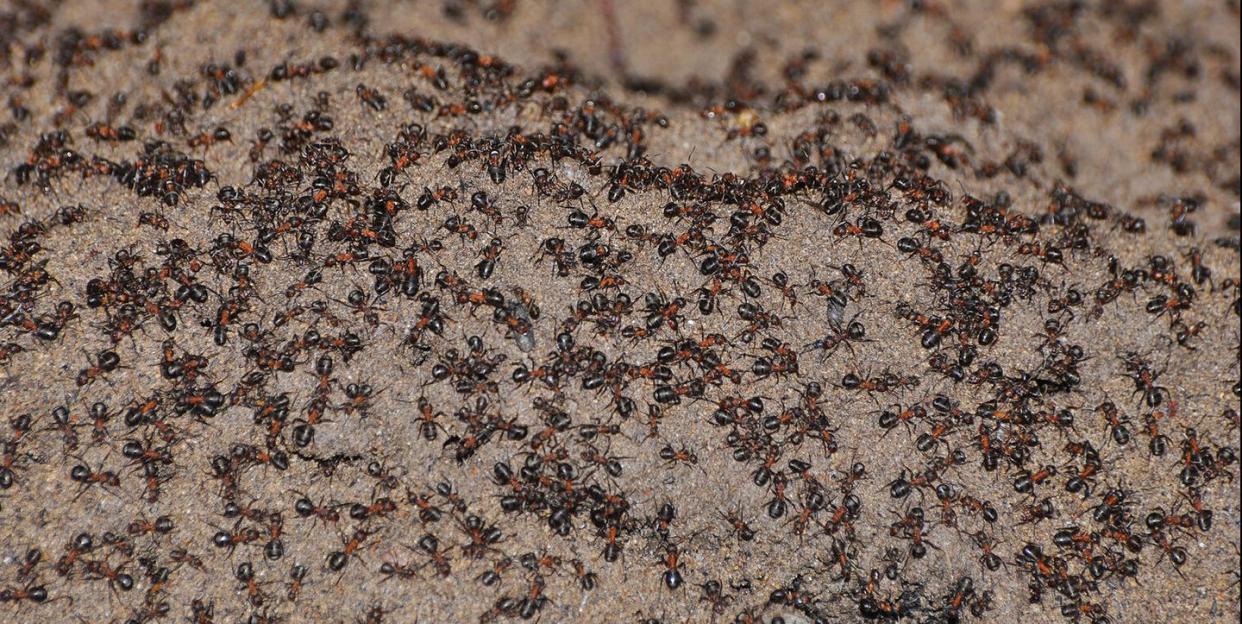How Cannibal Ants Escaped from a Nuclear Bunker

Cannibal ants that were first discovered in a bunker in 2013 now have a boardwalk to freedom.
Scientists know wood ants in particular often consume their fellow ants’ corpses.
Ants are suspiciously smart, using collective action to find resources like food.
“Nuclear cannibal ants” sounds like a horror B-movie—one we’d totally see—but these real-life ants have beaten the odds after being stranded in a retired nuclear weapons bunker in Poland.
Since 2013, Polish scientists have studied this unique ant population. Their home colony is found in the area around an open pipe that leads into an otherwise sealed nuclear bunker, and ants fall through the pipe and find themselves with no way back to the surface. The ants don’t appear to reproduce at all, and their population is replenished only by the insects above ground that continue to fall through the pipe.
The scientists, led by Wojciech Czechowski of the Polish Academy of Sciences in Warsaw, published a paper in 2016 explaining how the ants consumed each other’s corpses as their primary food source. Now, in a new paper in the Journal of Hymenoptera Research, the researchers reveal they’ve built a land bridge of sorts for the ants to use to climb out of the bunker if they want. With the help of a new boardwalk, ants that fall through the pipe can simply climb back out ... if they survive the journey through their cannibalistic basement annex.
We shouldn’t be surprised by the ants’ ingenuity, as they’re regularly lauded as one of the most hardy species groups on the planet. They’re more apocalypse-ready than humans, fully capable of killing off an entire arm of their society in order to prevent the spread of disease. Some species enslave other ants and kill off entire nests so they can take over, with both species’s evolutionary futures hanging in the balance. And while climate change threatens many insect groups around the world, desert ants may thrive in a future with more rainfall.
The cannibalism of the nuclear bunker ants sounds brutal, but ants are better at sharing communal resources than many other organisms, including by “communal stomachs”—scientists find that ants consider each other’s stomach contents to be common property and share food by mouth-to-mouth contact. On the other hand, super colonies that include several queens are terrifying, but, by their very nature, too big not to fail because of the way ants are socialized to honor and obey just one queen at the expense of all rivals.
The scientists don’t know why the bunker ants stopped reproducing, but research has shown that ant populations are very sensitive to the equilibrium between work and reproduction in their groups, and if those proportions are off, the group will reproduce less or more in order to restore the balance. And in novel environments, the typically strict social structure of ants can break into something more complex, with social subgroups and new “castes” that don’t exist in more common conditions.
Having a cannibalistic rumspringa just a quick trip down the pipe and back may change the social dynamics of the surface ants as well as the bunker ants. Because of ants’ talent for navigation and trailmaking, there will likely never even be a traffic jam on the highway to hell.
You Might Also Like

